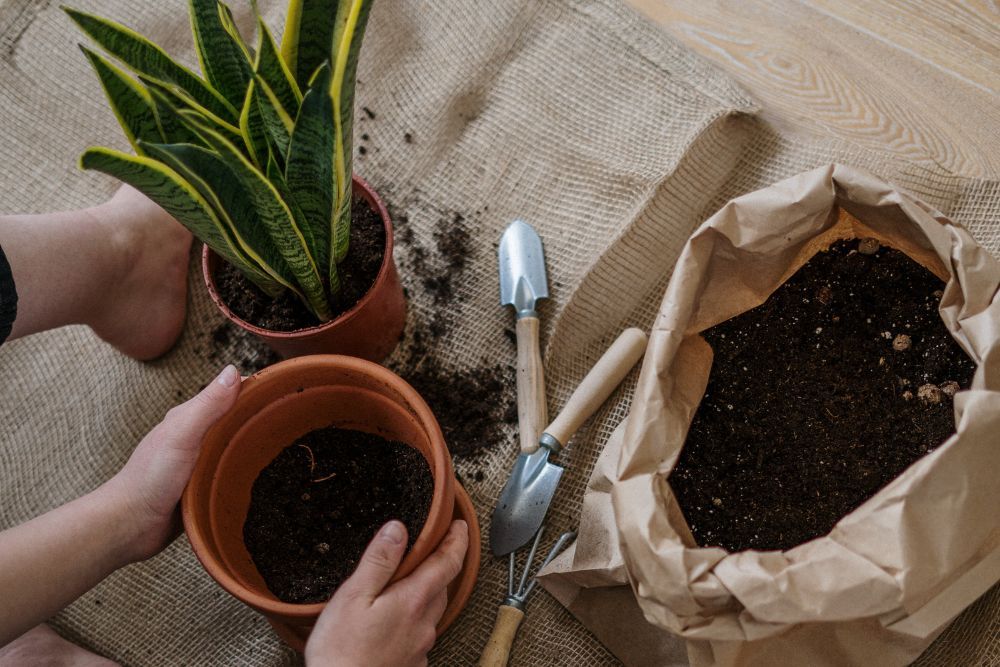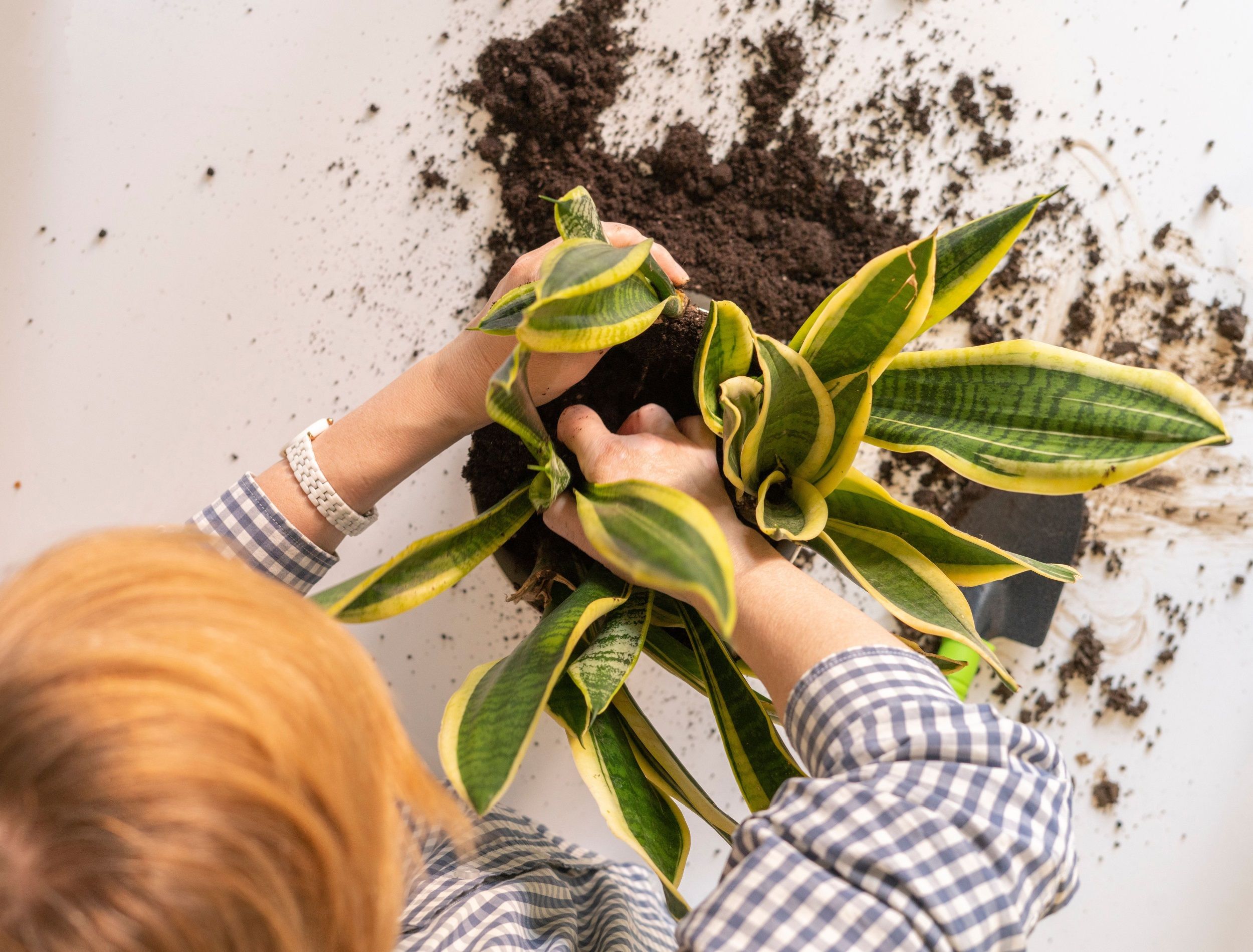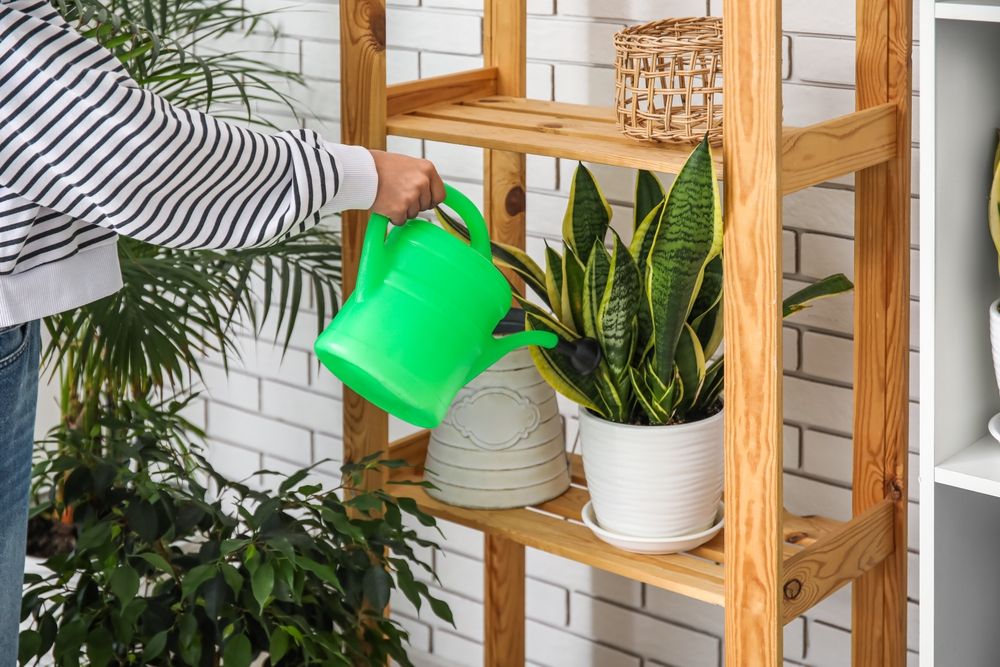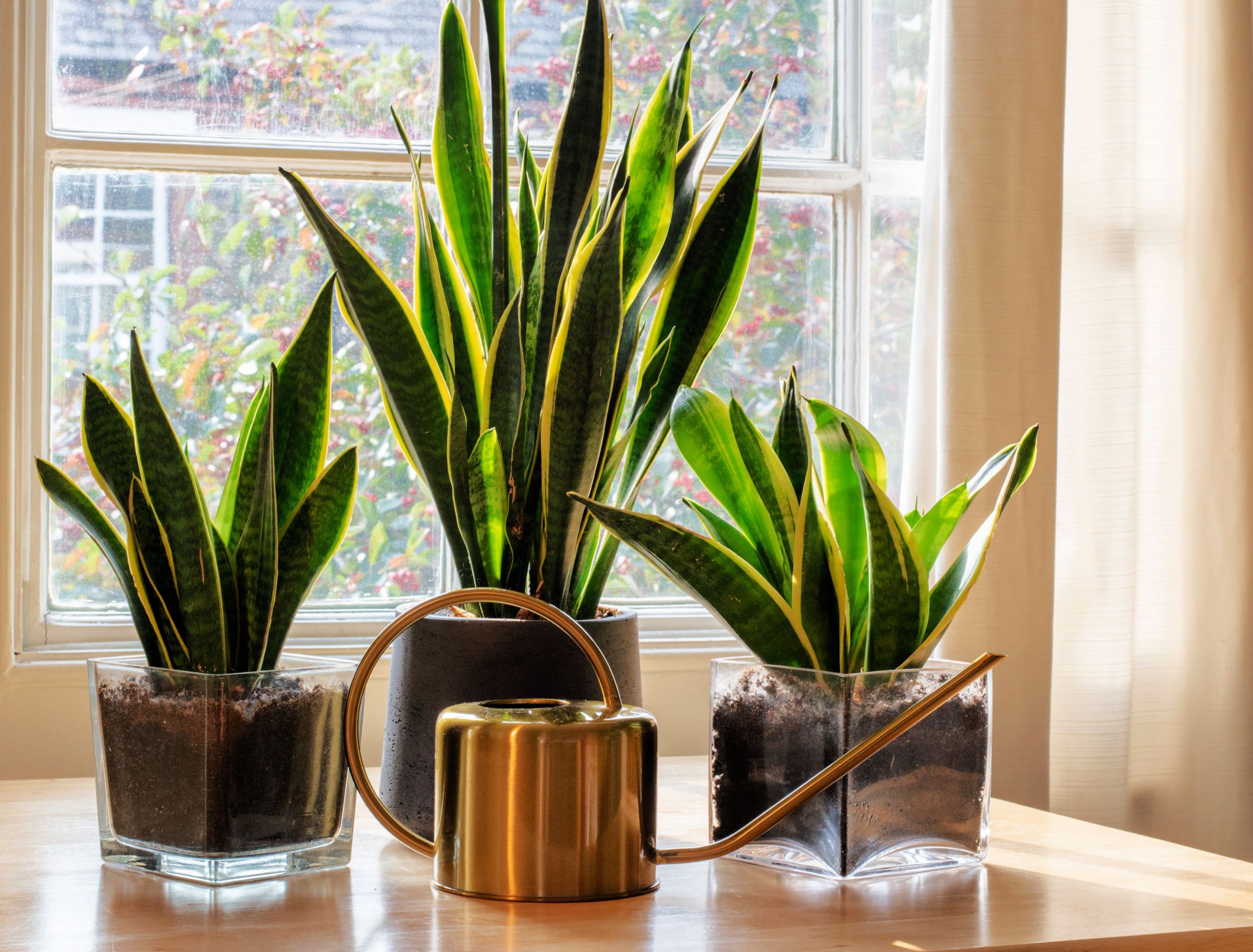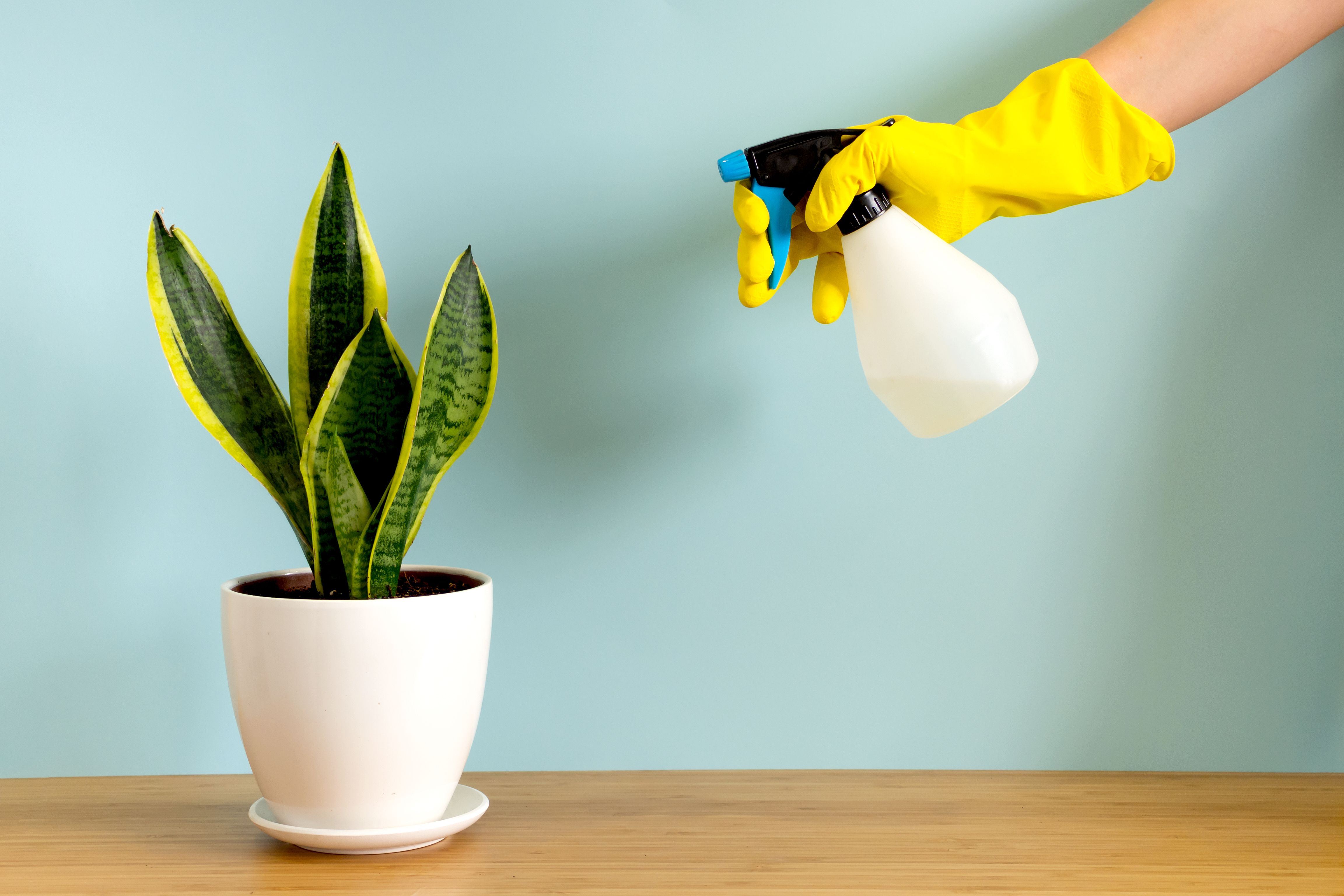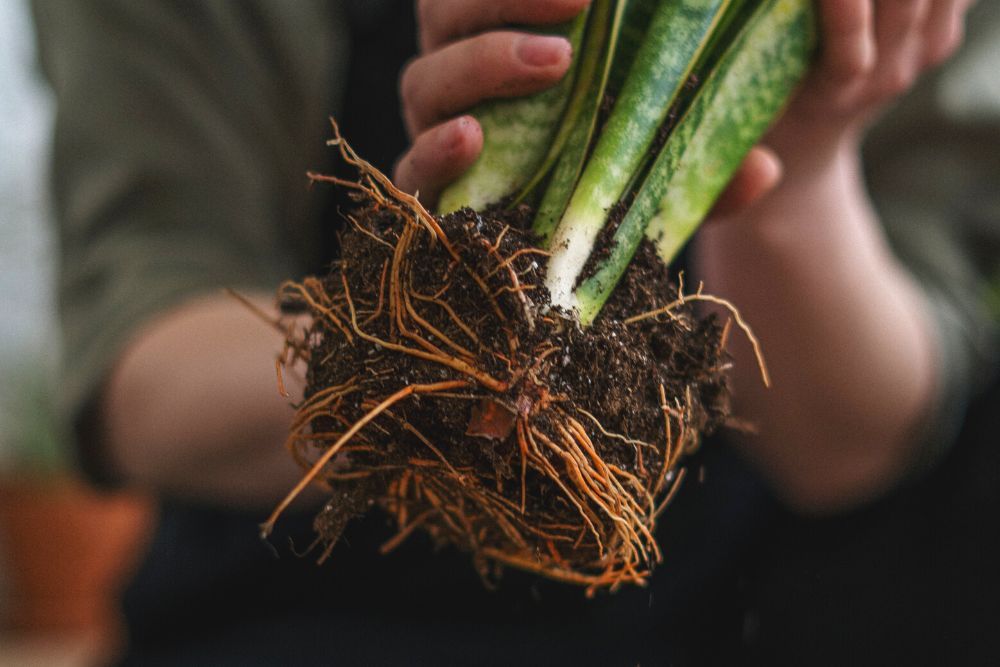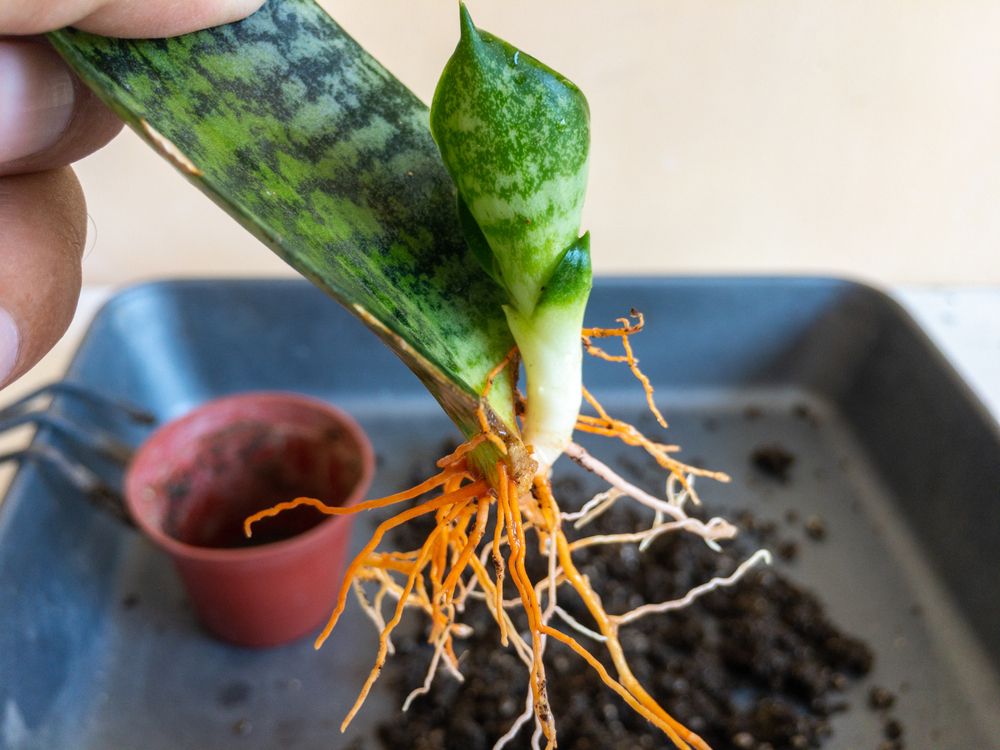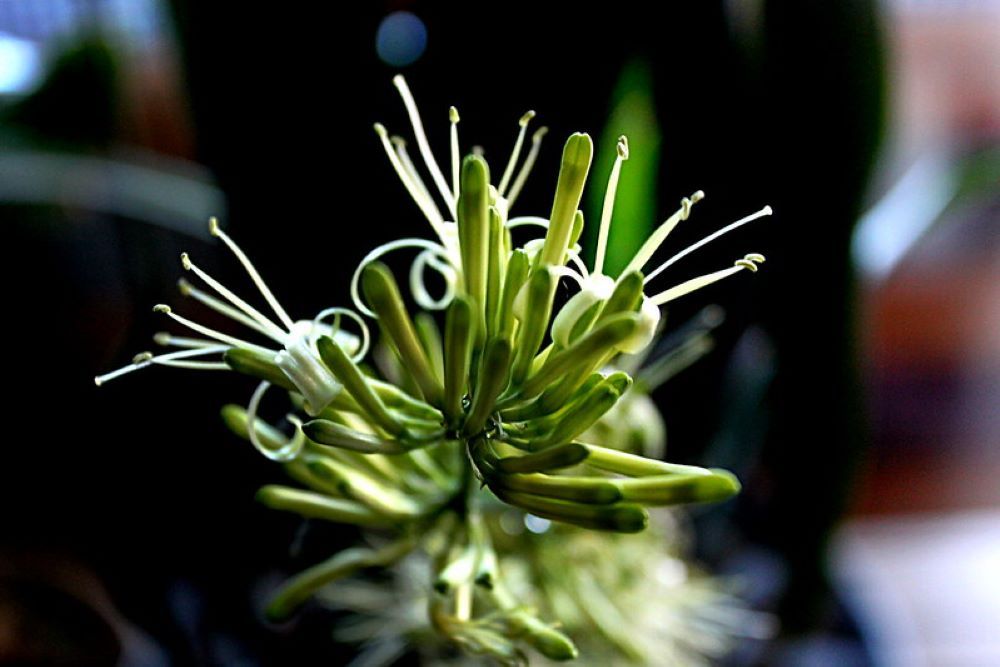If you're looking for a tough, drought-resistant plant to grow in your home, snake plants are a fantastic option! Snake plants are members of the Dracaenas family and are also called mother-in-law's tongue because of their long, pointed leaves that resemble that part of the body. Native to Africa, snake plants thrive in a semi-arid environment and survive with less water than other houseplants.
Learn the steps needed to plant, care for, and propagate snake plants so that you can enjoy their colorful green leaves all year long!
Materials Needed
- Terracotta pot with drainage holes
- Well-draining potting mix (look for one for succulents or cacti plants)
- A snake plant cutting or nursery plant
Snake plants are toxic to cats and dogs, so if you have pets, keep your plant in a location they can't get to. To be safe, you could choose a different houseplant that isn't toxic to pets.
Plant Your Snake Plant
Snake plants are most commonly grown from small nursery starter plants or cuttings.
- Prepare a one-gallon terracotta pot with some well-draining potting mix.
- Plant your snake plant. If planting a cutting, stick the bottom, larger side of the cutting an inch into the soil. If planting a nursery starter plant, dig a hole equal in size to the original plant's pot, then transplant the starter plant into its new home.
- Water so the soil stays nice and moist, but not so much that it becomes waterlogged.
Water Sparingly
Snake plants come from a semi-arid region, so they don't need as much water as other plants. In fact, overwatering is one of the few problems these drought-tolerant plants have since it can cause root rot. Allow the soil to dry out between waterings. You can use a soil moisture meter or stick your finger 2 inches into the soil. If it's still wet, hold off on watering.
Snake plants need roughly an inch of water every two to three weeks while growing in the spring and summer. Cut back in the dormant, cooler months of fall and winter,. You may only have to water every month or two. Always check the soil to know the perfect time to water. Snake plants prefer bottom watering to soak up water through their roots without getting the foliage wet. Bottom watering also reduces the risk of overwatering and encourages longer roots that stabilize the plant.
Keep Them Bright and Warm
One thing that makes snake plants such excellent houseplants is they can survive in a variety of lighting. They'll grow slowly in shady or low-light rooms. Bright, indirect light is ideal for snake plants. You can also have them on a sunny window ledge with direct sunlight. Be cautious moving your snake plant from one area to another. Moving the plant from low light into direct sunlight should be done over a week so that the plant adjusts to its new environment.
Snake plants prefer rooms with a temperature of 50 degrees Fahrenheit or above. They can survive outdoors in zones 8 and above as long as the temperature remains above this threshold. When winter comes, keep your snake plants away from drafts and ensure they're in a room that stays 50 degrees Fahrenheit or higher.
Snake plants can take over your garden if not kept in pots! They have an extensive root system that produces new plants by sending out runners underground. To keep your snake plant contained, don't plant it directly in your garden beds.
Mist and Clean the Leaves
The large, sword-shaped leaves of the snake plant are a welcome sight. However, these large leaves also collect dust. If you see your snake plant's leaves looking dusty, gently wipe the blades with a damp, clean cloth. Be careful not to snap the end off the leaves because when the tip is gone, that leaf dies.
If your home has less than 30 percent humidity, lightly misting your snake plant leaves is a good idea. Combine these two tasks by misting them with water and then cleaning them with a cloth. This action will keep the plant leaves shiny while allowing light so that the snake plant can perform photosynthesis.
Divide and Repot
Snake plants don't mind being root-bound; however, sometimes they show signs they've grown too large for their pots. If the leaves are getting yellow and mushy, the plant fills the container, or it hasn't grown in a while, these are signs you may want to divide and repot it.
- Remove the snake plant from its existing pot.
- Shake the dirt out of the roots so that you can see them better.
- Find the pups (smaller plants growing beside the parent plant) and use a sharp knife or garden shovel to cut the pup away from the plant. Make sure each pup has some roots and at least three rhizomes attached. The rhizomes are white shoots from the main plant that will grow new roots.
- Plant each separated pup in a new pot with well-draining soil.
Propagate From Leaf Cuttings
Root divisions aren't the only way to get new snake plants from your original plant. You can also propagate your snake plant by taking leaf cuttings.
- Take a clean, sharp knife or scissors and make a straight cut on the leaf of a healthy snake plant.
- Cut this leaf into sections 3 or 4 inches wide, noting which way the leaf was initially facing.
- Set the leaf section in a dry place away from the light so that it can harden and form a callus. Keeping the snake plant cutting dry prevents it from rotting when you plant it.
- Plant your leaf piece, bottom side down, an inch into your prepared potting soil.
- Place the pot in indirect light and keep the soil moist but not wet. You'll have rooted snake plants in a few weeks to a month.
Make sure you keep track of which part of the leaf is up and which part of the leaf is down! If you plant your leaf upside down, it won't grow roots to form a new plant.
Encourage Blooms
The leaves aren't the only attractive part of a snake plant. It can also produce tall spikes with greenish-white, fragrant clustered flowers. To encourage your snake plant to produce blooms, allow it to become root-bound. When the plant becomes root-bound, it sends new shoots and flowers. Holding back on the water and giving your plant more direct sunlight might also encourage it to produce blooms by putting it under some stress. When the plant is under the stress it sends out flowers as a survival mechanism to propagate this way instead of relying on root runners.
Keep Your Snake Plant Happy!
Snake plants are a great choice for indoor spaces because they don't require much water, they'll grow in various light conditions, and you can propagate your plant to give to friends and family. You can keep snake plants happy with minimum care, and occasionally they might delight you with fragrant flowers.
Do you have a snake plant? Try propagating it, then share this article — and your baby snake plants — with everyone you know so that they can enjoy the beauty of this low-care plant, too!


